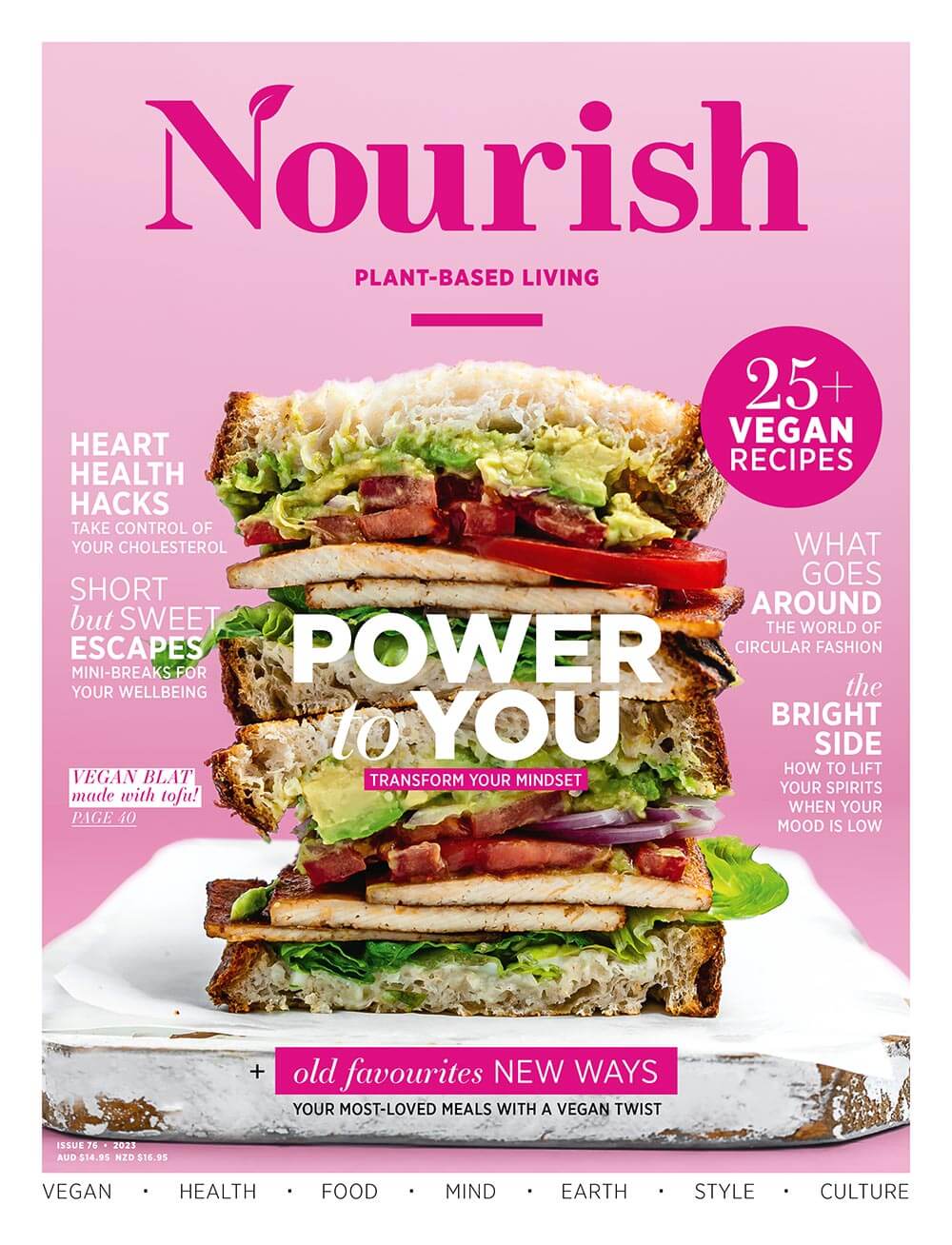
A handful of nuts each day is nature’s way of showing us that good things do indeed come in small packages.
One of the most persistent nutrition misconceptions around is that we need to eat animal products to get the protein our bodies need. In fact, this couldn’t be further from the truth. While all plants contain protein, standouts include grains, seeds, legumes, soy, and nuts – each one providing a range of health benefits for your body and mind. What’s more, these are actually far healthier than their animal-based counterparts, as they contain a wealth of essential vitamins and minerals. They also pack more nutrients into fewer calories – at least 28, including fibre, vitamin E, magnesium, and phytosterols.
PLANTS PROVIDE PROTEIN … AND MUCH MORE
Dietitian Belinda Neville highlights that, of all the rich plant sources of protein, nuts generally come out on top. For instance, “almonds and pistachios have 20 grams of plant protein per 100 grams, compared to tofu with 12 grams, chickpeas with 6 grams, and oats with 2–3 grams.”
Belinda adds, “There’s also no need to consciously combine different plant proteins at each meal, because our body naturally maintains a pool of amino acids. The key is just to eat a variety of plant-protein sources throughout the day … for example, eating both nuts and legumes provides us with all nine essential amino acids, lifting protein digestibility to 100 percent.”
NUTTING OUT THE RIGHT AMOUNT
A healthy amount of nuts to eat each day is 30 grams – about a handful, but according to a 2020 paper in the journal Public Health Nutrition, only two percent of Australians are eating the recommended amount.
To encourage us to eat more of these nutritional powerhouses, dietitian Belinda emphasises the benefits on offer. “Regularly eating nuts has been shown to contribute to heart health, assist with weight management, reduce the risk of cancer, reduce depression, and, overall, promote good health. Nuts also contain rich amounts of melatonin, a hormone best known for regulating the body’s circadian rhythms for a good night’s sleep.”
This daily habit offers some other major health benefits too. “For example, the fact that nuts are high in healthy, unsaturated fats and low in unhealthy, saturated fats, makes for a powerful combination! This helps improve blood markers that are linked with heart disease, such as high LDL (bad) cholesterol.” And since nuts are rich in fibre and protein, these fats make us feel fuller for longer – another bonus of adding more nuts to your meals.
ROASTED OR RAW?
There certainly seems to be a lot to love about these nutritional champions, so how can we optimise their nutritional value? “Your best bet is to get a good variety of nutrients, so mix it up when it comes to the type of nuts you eat and how they’re prepared,” says Belinda. Whether they’re raw, dry-roasted, or oil-roasted, nuts all provide rich sources of protein, fibre, healthy fats, calcium, magnesium, phosphorus, and potassium.
Belinda notes that certain nutrients, like fibre, will be slightly greater if unpeeled nuts are used, as fibre is concentrated in the skin. Additionally, nut butter or pastes are also packed with all the nutrients you can find in whole nuts; however, our bodies will absorb more of the fat when eaten this way.
HOW TO STORE
So how should you store your favourite bite-sized delights: fridge or pantry? It all depends on how fast you eat them. For the nuts you use less frequently, store them in an airtight container in the fridge or freezer; although it’s okay to keep everyday snacking ones in the pantry – again, in an airtight container – if the turnover is quick. Just remember to bring refrigerated nuts to room temperature before eating, or warm them gently, to bring out their delicious flavour and reap their full, nutritional benefits.
***
Here is a small selection of tempting recipes from the Nourish collection to help you incorporate a variety of different nuts into your life:
Chargrilled vegetable salad with couscous, spiced coconut yoghurt and almonds
White chocolate and pistachio cheesecake
Gluten-free macadamia florentines
Slider images, from left to right: Probiotic pecan porridge • Almond tahini coconut cups • Chargrilled vegetable salad with couscous, spiced coconut yoghurt and almonds • Walnut ragu lasagne • White chocolate and pistachio cheesecake • Gluten-free macadamia florentines



























